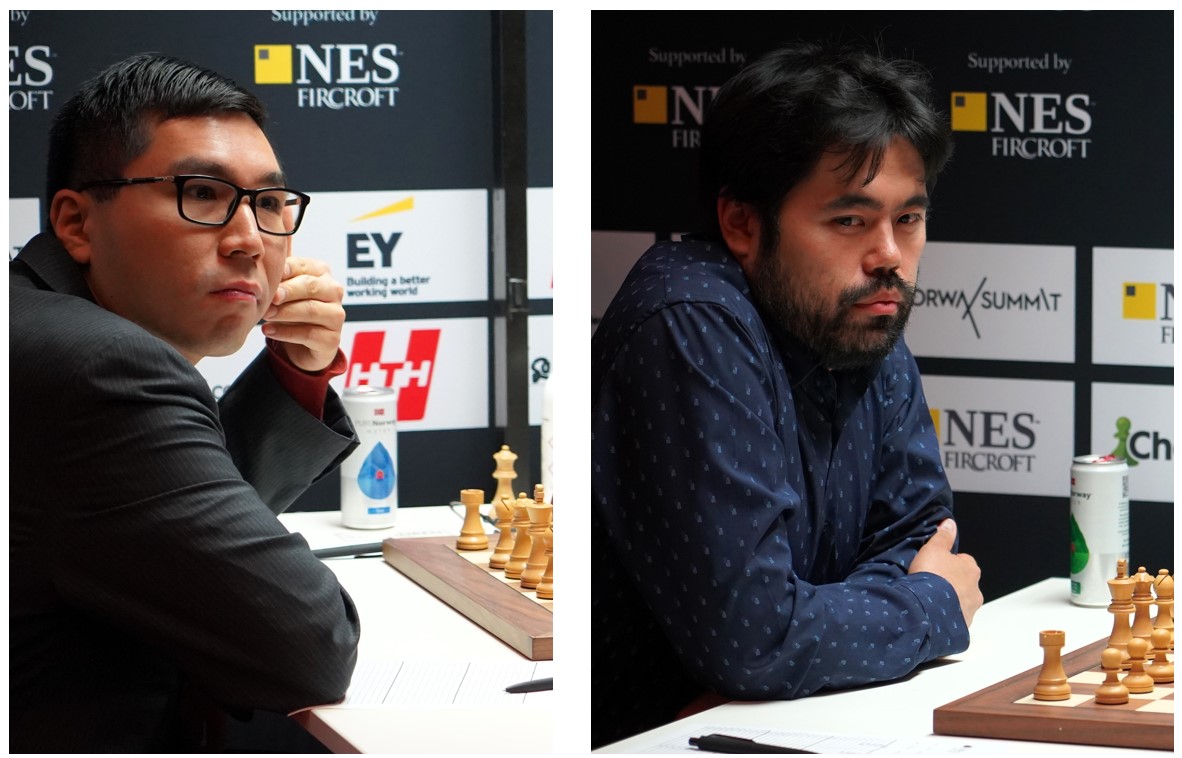 By Mehmet Ismail, economist at King’s College, London
By Mehmet Ismail, economist at King’s College, London
Norway Chess is renowned not only as one of the strongest tournaments in the world but also for its innovation. Its founder and chairman, Kjell Madland, pioneered the inclusion of the Armageddon format after drawn games, among other things, to enhance both excitement and viewership. This year, Norway Chess introduced an additional feature, the Game Theory Corner, named by project manager Benedicte Westre Skog, which I had the privilege of implementing.
In this article, I will briefly explain the novel metrics—Game Intelligence (GI) and Game Point Loss (GPL)—that I used during the tournament to provide insights into players' playing styles and performance.
Analysing Chess Games
If you analysed a game with an engine like Stockfish, you might be familiar with the term “average centipawn loss,” which essentially tells us how a player’s moves deviate from engine’s best moves. However, chess is not just about precision; it is also about creativity. This is where the GI score comes in, as it combines human performance with engine evaluations, while also accounting for Norway Chess’s unique scoring system in which the winner receives 3 points.
Let’s talk about GPL first. It calculates how many points a player could have scored by making the best moves according to an engine, compared to the moves they actually made. A lower GPL indicates that a player’s moves were closer to what the engine considers optimal, signifying higher accuracy. In contrast, a higher GPL indicates that the player’s moves deviated more significantly from the optimal engine moves. GPL is similar to average centipawn loss but more nuanced and has an intuitive interpretation. For instance, a GPL of 3.0 essentially conveys that the player’s deviations from optimal moves are equivalent to having lost a whole game, as 3 points are awarded for a win in Norway Chess.
Now, let’s move on to the GI score, which is simply derived by subtracting a player's GPL from their result of the game. For example, in the GM Hikaru Nakamura vs GM Fabiano Caruana game played in the last round of the tournament, Nakamura won the game and received 3 points. With a GPL of 0.11, his GI score can be calculated as follows: 3 - 0.11 = 2.89. This score reflects Nakamura’s ability to win the game with only a slight deviation from the top engine moves. While Wesley So was the most accurate player in Norway Chess (the lowest average GPL per game), Hikaru Nakamura’s riskier play (highest GI score) induced his opponents to make more mistakes (photos Dirk Jan ten Geuzendam).
While Wesley So was the most accurate player in Norway Chess (the lowest average GPL per game), Hikaru Nakamura’s riskier play (highest GI score) induced his opponents to make more mistakes (photos Dirk Jan ten Geuzendam).
The GI score captures the trade-off between playing the main-line and deviating from it either intentionally or unintentionally. A positive GI score indicates that the gains from deviations from the perfect play outweigh the potential losses due to these deviations, and a negative GI score indicates the opposite. In a perfectly played game by both sides, a player's GI score would be around 1.0 because the outcome would likely be a draw. (Note that a draw without an Armageddon win is worth 1 point in Norway Chess.) The GI score can exceed 1.0 when a player takes calculated risks, deviating from the main line, that may result in a win. It can even reach 3.0 if one player plays perfectly while the opponent makes mistakes.
 Figure 1. The total GI score, average GPL of the players in Norway Chess 2023
Figure 1. The total GI score, average GPL of the players in Norway Chess 2023
Hikaru Nakamura not only won Norway Chess 2023 but also has the highest GI score as illustrated by Figure 1. By contrast, GM Wesley So maintained remarkable consistency by securing the lowest average GPL per game. This solidified his position as one of the most precise players in modern chess. Nakamura’s GPL is higher than So’s, which indicates that So played more accurately according to engine, but Nakamura’s GI score is higher, which indicates that Nakamura’s deviation from the perfect engine moves induced more errors on his opponents. Hikaru Nakamura, Fabiano Caruana, Gukesh D, and Anish Giri are the other players who played with a GPL under 1, which shows exceptional accuracy. Interestingly, GM Wesley So’s GPL was also the lowest in Norway Chess 2022, though GM Magnus Carlsen won the tournament and had a significantly higher GI score.
Conclusion
GM Hikaru Nakamura’s unforgettable campaign, GM Wesley So’s incredible accuracy, and GM Fabiano Caruana’s consistent play throughout the tournament were some of the highlights of Norway Chess 2023. Young GM Alireza Firouzja’s risk-taking style, although not always successful, shows promise, and his low GI score may well rise as he gains experience and fine-tunes his risk-taking approach and better understands the strengths and weaknesses of his opponents.
The GI and GPL metrics bring into focus the unique style and performance of each player. It is important to note, however, that these metrics, while valuable, are not infallible. They are tools that help us quantify players' styles and performance, but they are only part of a larger picture. Even so, the focus on the human element provides a unique and insightful perspective into the intricate nature of top-level chess.
In conclusion, the introduction of the Game Theory Corner at Norway Chess has indeed set a new standard for analysing chess games. The potential it holds for enhancing our appreciation of different playing styles in the coming years is truly promising.